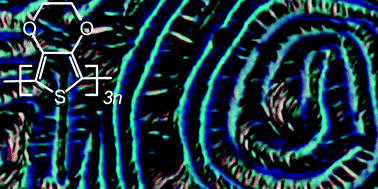Vortex fibril structure and chiroptical electrochromic effect of optically active poly(3,4-ethylenedioxythiophene) (PEDOT*) prepared by chiral transcription electrochemical polymerisation in cholesteric liquid crystal†
Abstract
Chiroptical electroactive poly(3,4-ethylenedioxythiophene) (PEDOT) was electrochemically synthesised in a cholesteric liquid crystal (CLC) electrolyte solution from the terEDOT monomer. PEDOT synthesised from terEDOT was found to enable the formation of a fibril structure. In contrast, the EDOT monomer produced PEDOT without fibrils. Electrochemical


 Please wait while we load your content...
Please wait while we load your content...